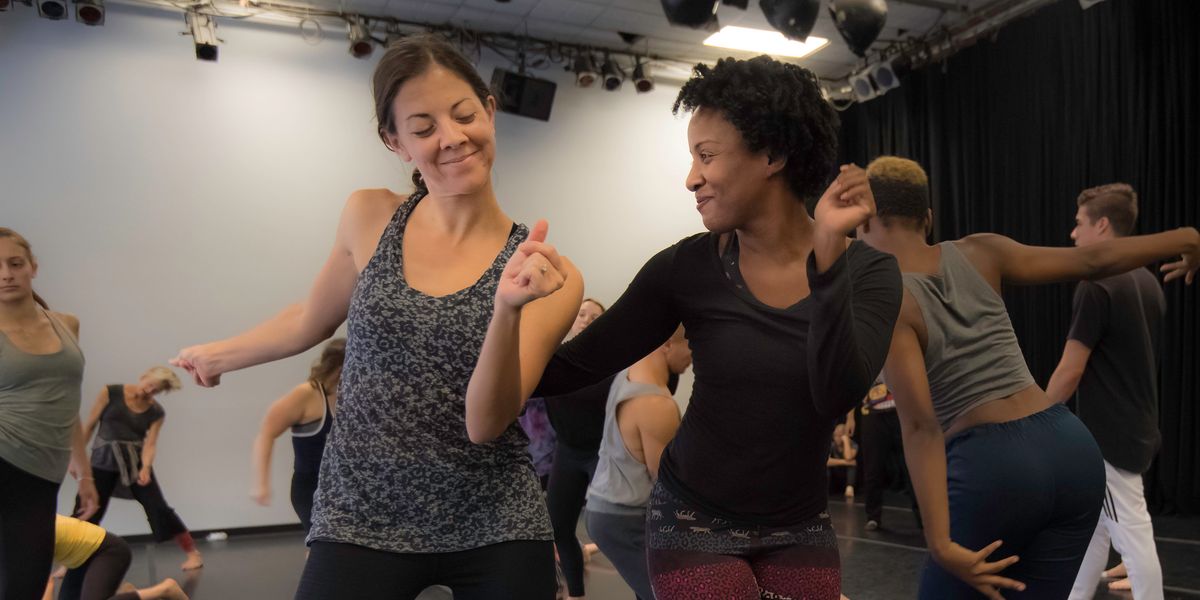How Dancers Can Build a Better College Class Schedule
Looking through a college course catalog is like surfing Netflix—you can get totally overwhelmed by options. Should you watch “Love is Blind” or “You”? Should you take “Acting for Dancers” or “Intro to Improvisation”?
Never fear, Dance Spirit is here (to help you with the latter dilemma, anyways). We asked the experts for tips to help you figure out what next semester’s class schedule should look like—and we got help from the experts.
Where to Start
For many undergraduate dancers, your schedule is pretty much prescribed for your first year or two at school, by way of core requirements. But once you’ve taken your 8 a.m. ballet and your “Intro to Dance Comp,” what’s next?
Start building your class schedule by asking questions—and lots of them. “Don’t be afraid to set up a meeting with a faculty member to get advice about what you should be studying,” says Susan Hadley, chair of the dance department at The Ohio State University. Your teachers know your dancing better than anyone else, so they’re better poised to give you good advice.
It can also be helpful to speak with a peer mentor—another student in the dance department who’s a year or two older than you are. “Ask what the day looks like for them, what the week looks like for them,” says Amy West, a lecturer of dance at University of Michigan, “Ask about how many hours they spend in rehearsals, how many dance classes they take a day.” Speaking with a fellow student in the department can give you a better sense of what’s doable in terms of time commitment. If you’re rehearsing five hours a night, it might not be feasible to spend seven hours in dance class each day, as well.

University of Michigan dancers in class (Kirk Donaldson, courtesy University of Michigan School of Music, Theatre & Dance)
Narrow it Down (But Not Too Much)
As you’re flipping (or, more realistically, scrolling) through your course catalog, try to think about the big picture. What are your goals? Where do you want to be dancing in 10 years? “You need to be clear on what you’re hoping to accomplish, and then tailor your classes to meet those goals,” says West. Or, think about a goal for the semester—something small, like getting more comfortable moving across the floor—and look for classes that will help you work toward that goal.
Be careful not to think too narrowly about how you approach your goals, though. If you dream of dancing with a professional ballet company, you shouldn’t necessarily limit yourself to classical ballet training. “If you look at ballet companies, they’re doing classical repertoire, but they’re also doing contemporary ballet, contemporary dance, even jazz,” says Hadley. “A person who wants to be in a ballet company should still train in a wide range of genres.” West agrees. “It’s important to be open-minded, as the dance world is becoming more diverse and blended,” she says.

Ohio State University dance students performing “Steadfast Tinder Soldier,” choreographed by Tine Salling (Catherine Proctor, courtesy The Ohio State University Department of Dance)
Think Outside the Box
The classes that could most benefit your dance career might not be dance classes at all. “Look at courses in art history, music, photography, film; these are our sister art forms,” says Hadley. “We’re better artists when we understand our collaborators.”
West recommends thinking about how to make yourself a hirable dancer post graduation. “Acting would be great, or even some voice lessons,” she says. “You don’t have to become an opera singer, but if you can carry a tune and have a foundational understanding of music, it will only make you more marketable in the profession.”
Thinking outside the box might also mean looking into dance classes in styles you’re not familiar with, which can be really rewarding—non-Western genres of dance, in particular. “Train for the dance world of today, but also the dance world you want to create,” says Hadley. “Train with an eye toward the legacy you’re going to leave as a professional in the field.”




